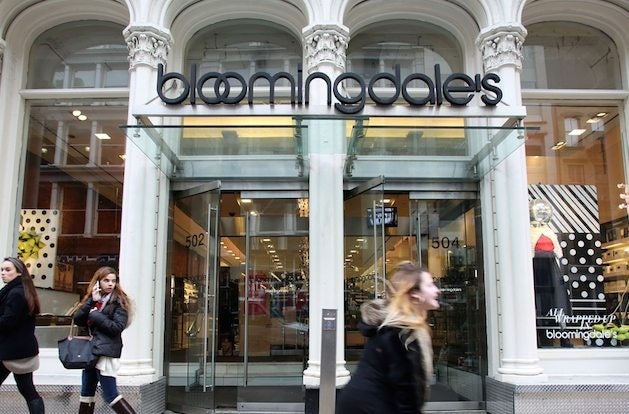
Retailers like Bloomingdale's are working on making it easier for Chinese consumers to buy goods online and have them shipped to China. (Shutterstock)
As China’s e-commerce market has gone increasingly global, Chinese consumers have now expanded their shopping reach to e-tailers in over 100 different countries.
According to a recently published study by Alibaba’s Taobao that looked at trends in Chinese online shopping habits since 2005, the range of countries and regions with online shops selling goods to China has increased dramatically.
In the early years of the study, Hong Kong and Macau were the main non-mainland locations preferred by Chinese shoppers with their sights set on goods from overseas. Over the years, that range expanded to Japan, South Korea, North America, Europe, and even South Africa. The top three countries shipping into the mainland are Japan, the United States, and South Korea, which are followed by Hong Kong, Germany, France, Taiwan, Australia, Britain, and Denmark.
The study was published at a time when the “e-borders” of China’s online shopping market are blurring through new international business partnerships and government policies. Both Alibaba and JD.com have special global platforms that allow overseas online shops to ship to consumers in China, while the Chinese government has set up “bonded warehouse zones” in Shanghai, Zhengzhou, Ningbo, Hangzhou, Chongqing, and Guangzhou for processing faster orders and offering lower taxes. Earlier this summer, Tmall Global set up 11 country “pavilions” to promote international shopping.
The high ranking in goods from the United States is likely due to the fact that significant group of U.S. retailers has teamed up with Alibaba’s Alipay ePass payment system for ordering abroad, including Gap and Gilt, while Bloomingdale’s, Macy’s, and Saks Fifth Avenue have partnered with Borderfree. Last week, U.S. retailer Macy’s also became the first U.S. department store to set up shop on Tmall Global.
The study also took a look at what Chinese consumers are buying, finding that this year, they bought over 2 million products online from overseas. Top categories included cosmetics and skincare products, but as shoppers became more experienced with ordering online from abroad, they expanded from more popular categories into harder-to-find products like local food specialties.
The growth of easy overseas shipping options provides consumers with a useful alternative to China’s sketchy and unregulated daigou market for luxury, which features items (ostensibly) brought into the country from sellers who have traveled abroad. While these are sold at the much lower prices seen in places such as Japan or Europe, the lack of oversight over the market means that many unscrupulous sellers are actually just hawking fakes for Paris prices.
The overseas retail e-commerce market is only set to skyrocket in the years to come—a study by Daiwa Capital Market predicted that cross-border retail sales will reach $289 billion by 2020, marking a compound annual growth rate of 52 percent from 2014 until then.